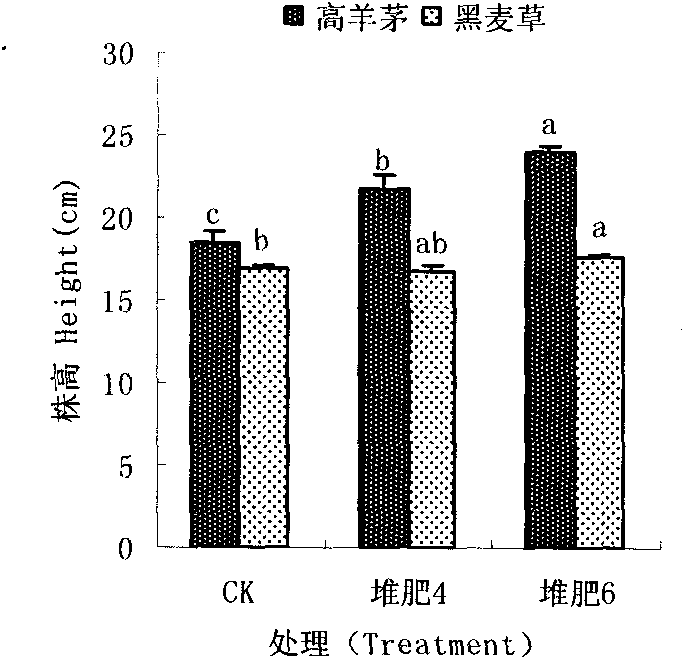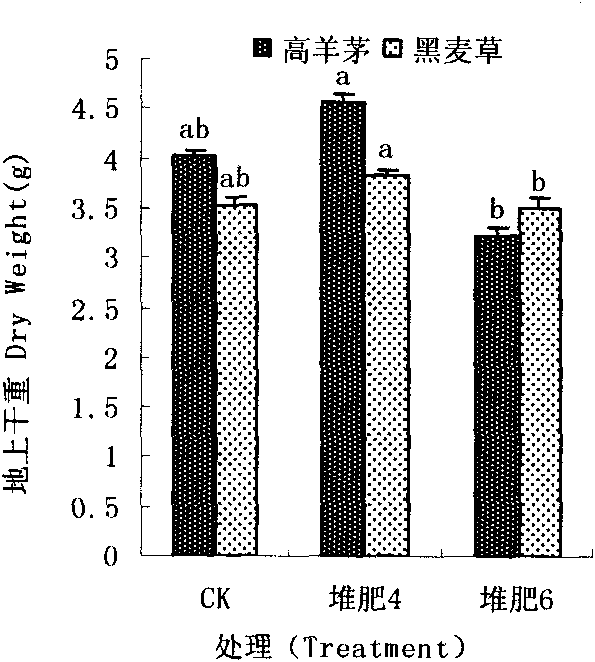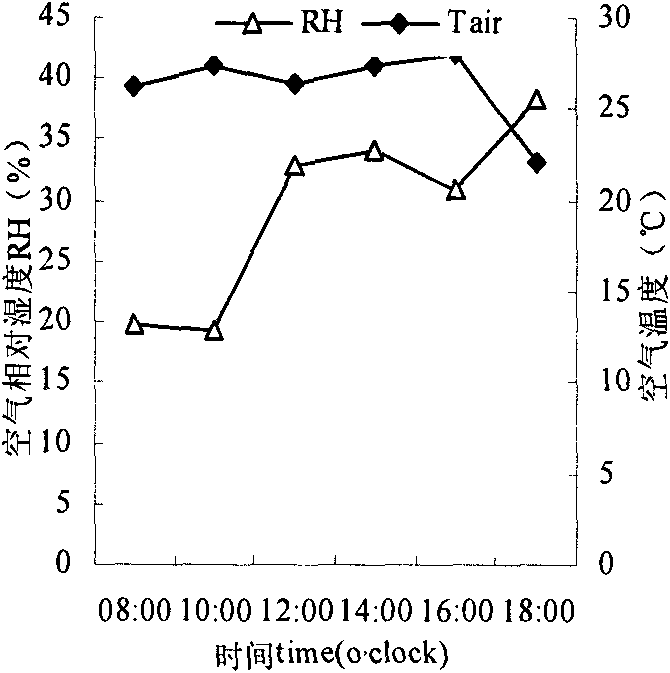Method for regulating and controlling ecological photosynthesis of tall fescue by adopting fine garbage compost
A photosynthetic ecology and garbage composting technology, which is applied in fertilizer mixtures, botanical equipment and methods, applications, etc., can solve problems such as loose texture of garbage composting
- Summary
- Abstract
- Description
- Claims
- Application Information
AI Technical Summary
Problems solved by technology
Method used
Image
Examples
Embodiment 1
[0083] (1) Manually pick up the debris in the garbage compost, then dry it at 105°C for 8 hours to constant weight, and sieve out the compost with a particle size of 1700nm; crush the compost with a particle size of 1700nm at 24000 rpm, Prepare 300nm compost (compost 4) and 240nm compost (compost 6);
[0084] (2) Use a plastic pot with a diameter of 7cm and a height of 10cm. On 1750g of soil, 3g of compost with a particle size of 300nm (compost 4) and 240nm compost (compost 6) are evenly sprinkled on the soil surface, and finally 250g is evenly covered on it. Loam;
[0085] (3) sow tall fescue 5g then, control temperature is 20 ℃, and relative humidity is 40%, and illumination is the natural light that penetrates into the room;
[0086] (4) At the initial stage of sowing, water fully to ensure that the seeds can germinate smoothly and the growth of the seedlings at the initial stage. After two weeks, water according to 55% of the field water capacity every two days to maintai...
Embodiment 2
[0089] (1) Manually pick up the debris in the garbage compost, then dry it at 105°C for 8 hours to constant weight, and sieve out the compost with a particle size of 1700nm; crush the compost with a particle size of 1700nm at 24000 rpm, 300nm compost (compost 4) and 240nm compost (compost 6) were prepared.
[0090] (2) Use a plastic pot with a diameter of 7cm and a height of 10cm. On 1750g of soil, 3g of compost with a particle size of 300nm (compost 4) and 240nm compost (compost 6) are evenly sprinkled on the soil surface, and finally 250g is evenly covered on it. Loam;
[0091] (3) sow tall fescue 5g then, control temperature is 26 ℃, and relative humidity is 60%, and illumination is the natural light that penetrates into the room;
[0092] (4) At the initial stage of sowing, water fully to ensure that the seeds can germinate smoothly and the growth of the seedlings at the initial stage. After two weeks, water according to 65% of the field water capacity every two days to m...
PUM
 Login to View More
Login to View More Abstract
Description
Claims
Application Information
 Login to View More
Login to View More - R&D
- Intellectual Property
- Life Sciences
- Materials
- Tech Scout
- Unparalleled Data Quality
- Higher Quality Content
- 60% Fewer Hallucinations
Browse by: Latest US Patents, China's latest patents, Technical Efficacy Thesaurus, Application Domain, Technology Topic, Popular Technical Reports.
© 2025 PatSnap. All rights reserved.Legal|Privacy policy|Modern Slavery Act Transparency Statement|Sitemap|About US| Contact US: help@patsnap.com



